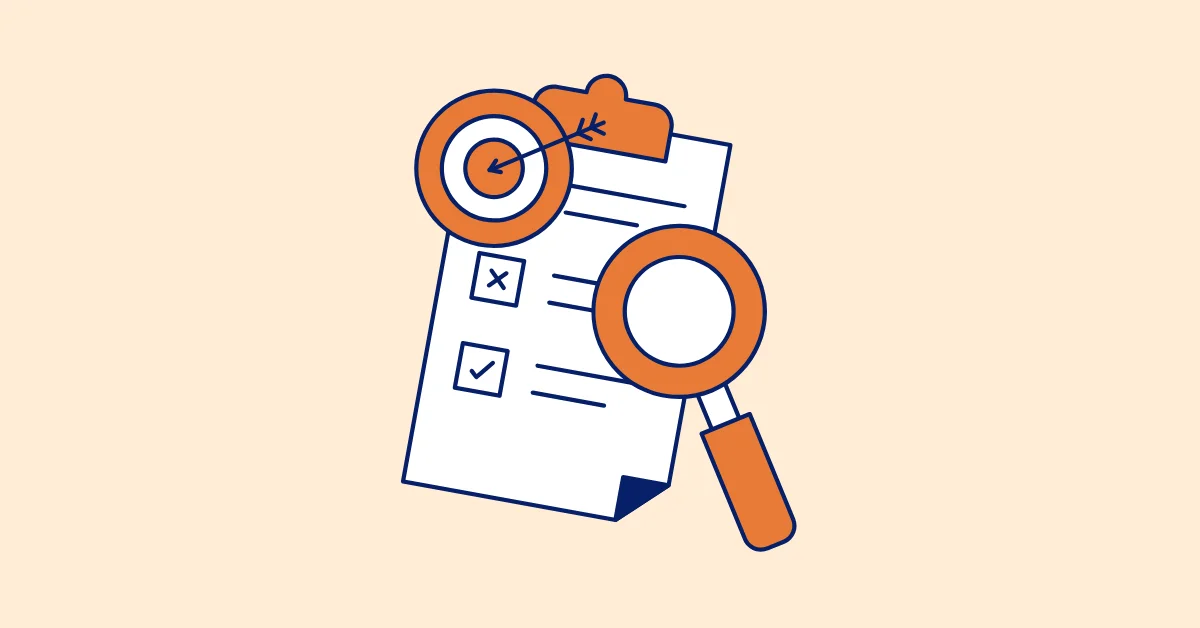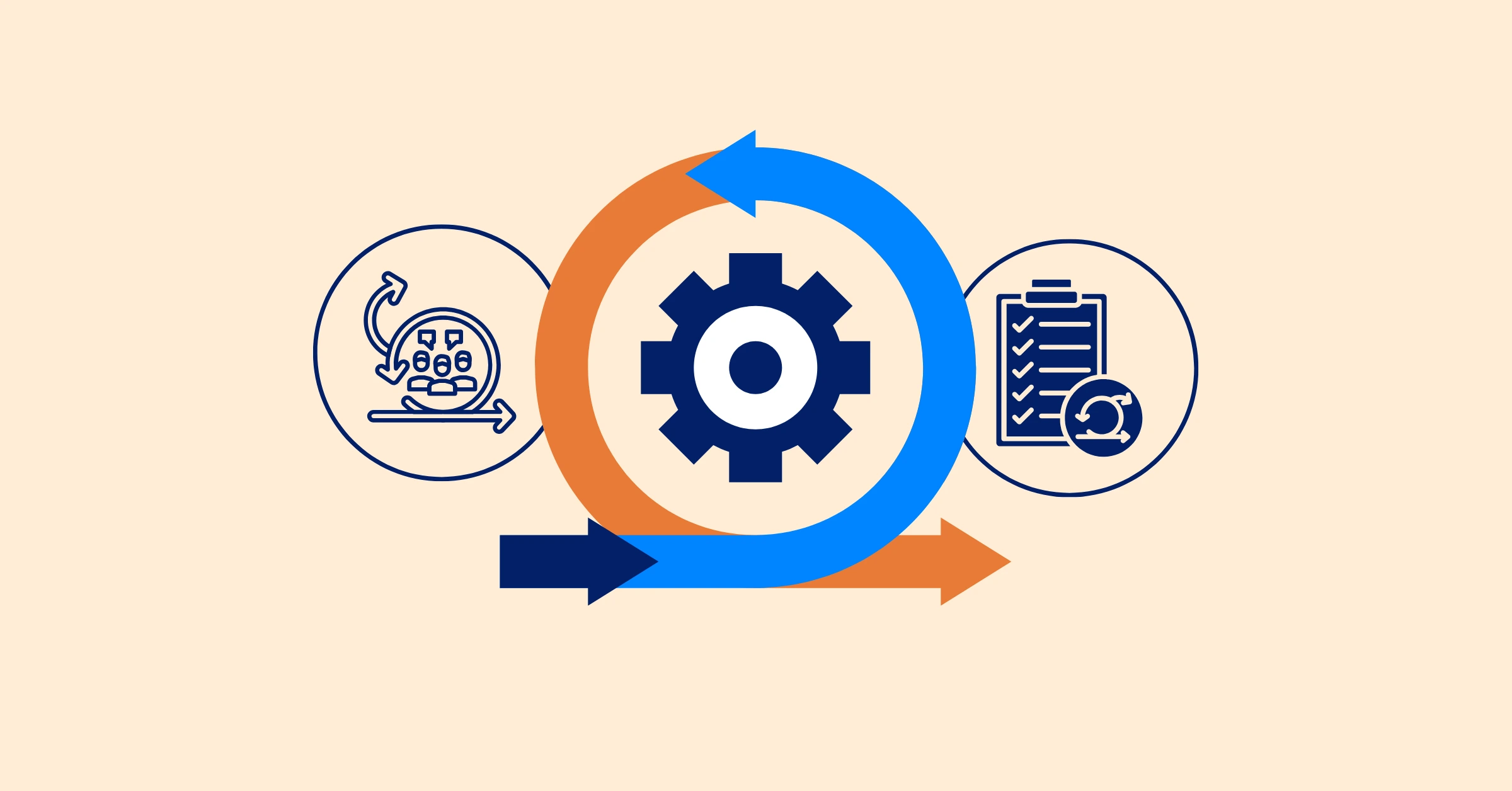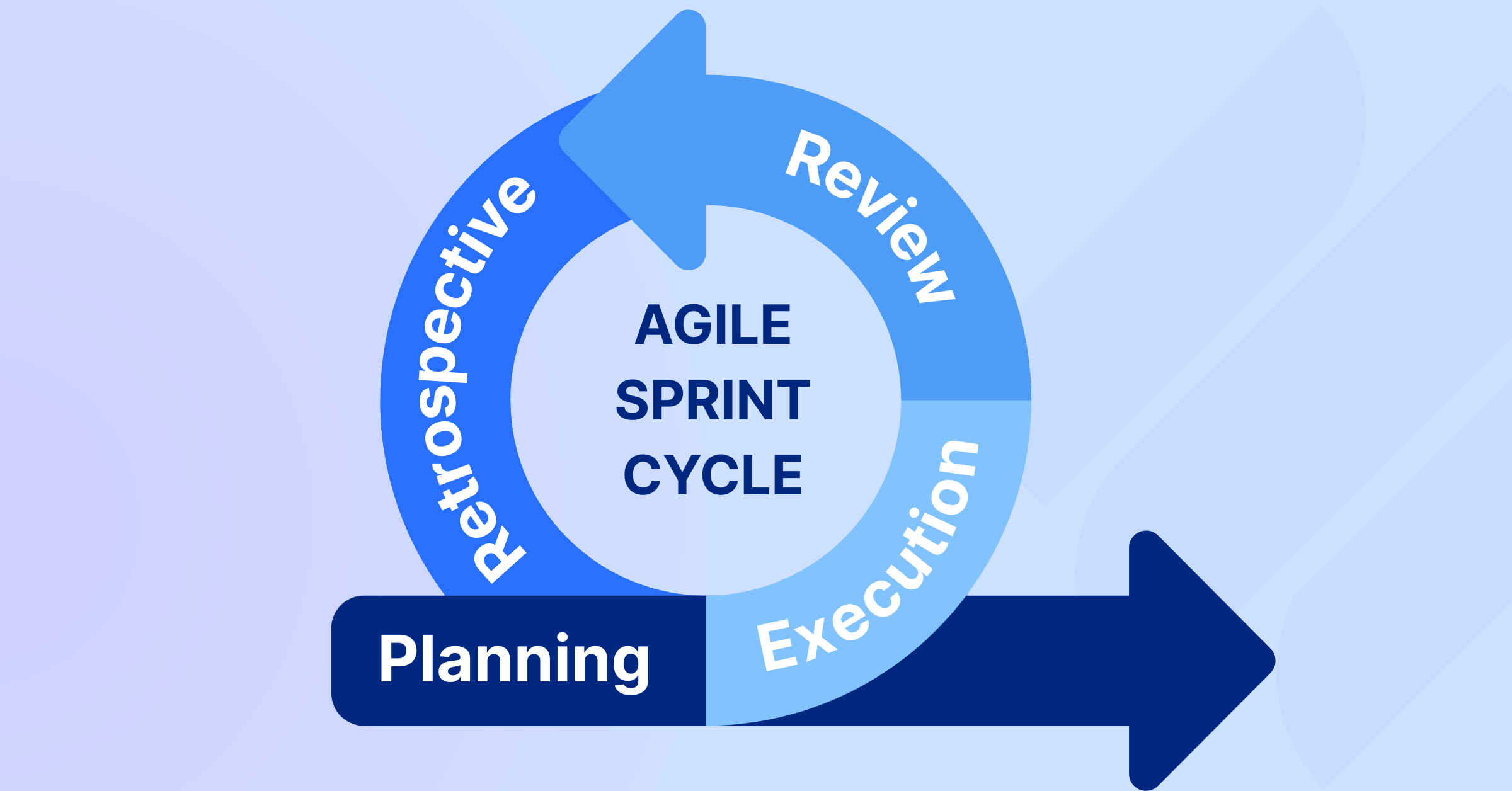Mapping Technical Requirements in Complex IT Projects
Technical requirements are the foundation of IT project management, ensuring systems meet necessary conditions for functionality, security, and performance.
Technical requirements are the foundation of any IT project. They define the specific conditions a system must meet to function properly, covering everything from hardware and software to security and performance standards. Without clear technical details, projects can easily go off track, resulting in delays, increased costs, or failure.
These requirements are essential for ensuring that the system meets the needs of users and aligns with business goals. They guide developers and technical teams in building the right solution.
In this article, we’ll explain what technical requirements are and why they are crucial to a project’s success. We’ll also discuss how to gather, write, and manage them effectively, and tackle common challenges that come with defining them.
What are Technical Requirements?
Technical requirements define the specific criteria that a system, product, or solution must meet to be considered successful from a technical standpoint. These requirements focus on how a system will operate, perform, and integrate with other systems or technologies.
In project management, these requirements play a key role in guiding the development process. They ensure the project aligns with the team's technical abilities and the business needs. These requirements help the team understand the necessary tools, infrastructure, and technologies to build the system and make sure everything works as planned.
For example, in a mobile app project, technical requirements could be:
- "The app must support both iOS and Android platforms with at least 90% code reuse."
- "The app must integrate with the Google Maps API for location tracking."
Differences Between Functional vs. Technical Requirements
Functional and technical requirements are both essential in any project, but they focus on different aspects of the system. Here’s a breakdown of how they differ:
| Aspect | Functional Requirements | Technical Requirements |
|---|---|---|
| Focus | Describes what the system must do (features). | Describes how the system will perform (technology, performance). |
| Examples | "Users can create accounts." | "The system must be hosted on AWS with auto-scaling enabled." |
| Audience | Business stakeholders, end-users. | Developers, IT teams, and system architects. |
| Purpose | To meet user needs and business objectives. | To define the technical conditions for system performance. |
| Measurability | Measured by whether the system performs its tasks. | Measured by system performance, load capacity, and security standards. |
Importance of Technical Requirements in IT Projects
These requirements are crucial for the success of any IT project management. They lay the groundwork for how the system will be built, function, and scale. Here’s why they’re so important:
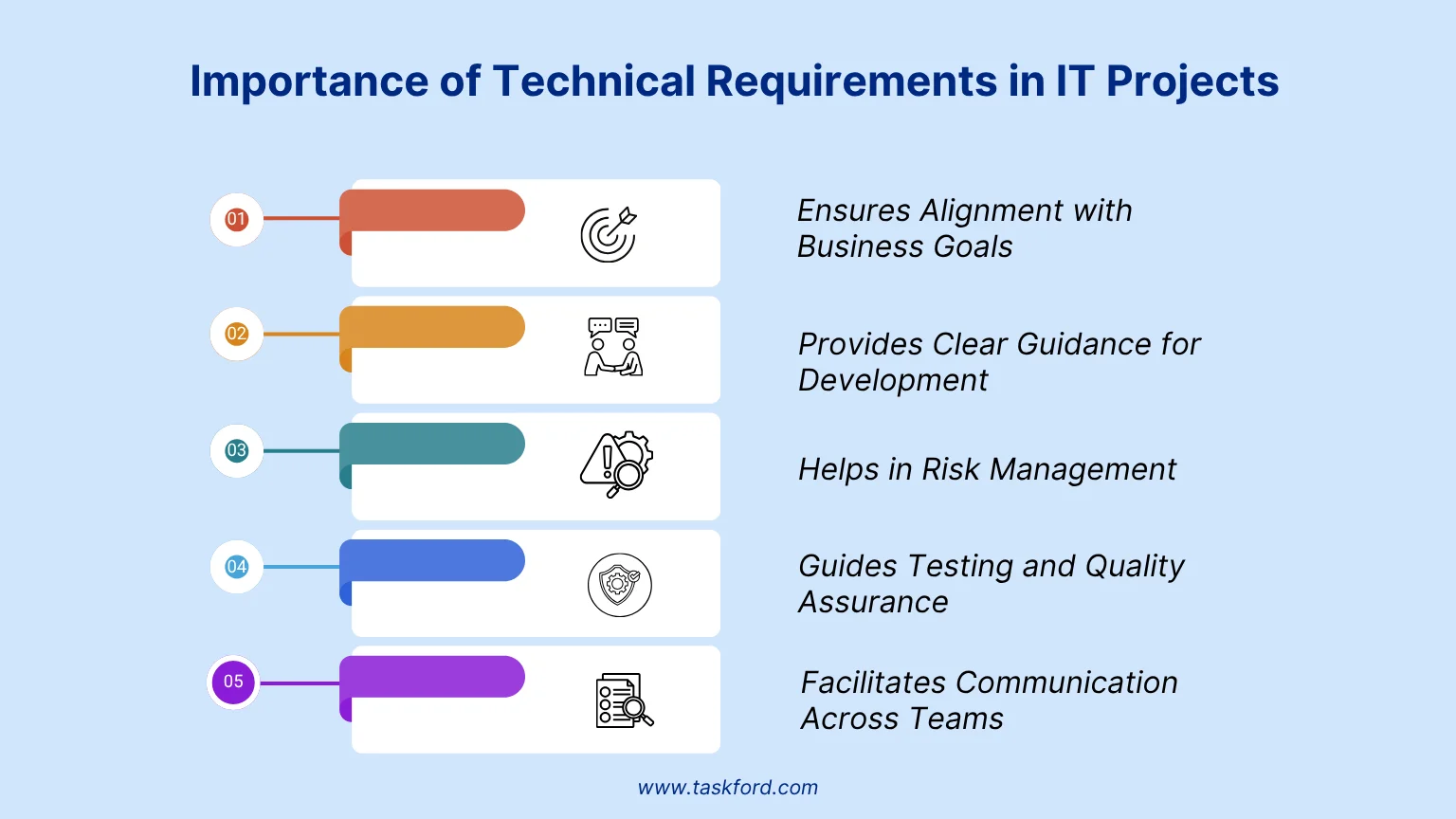
1. Ensures Alignment with Business Goals
They make sure that the system is being built with the right technology and infrastructure to support the business objectives. By outlining clear expectations, they ensure that the project aligns with the goals set by the stakeholders.
2. Provides Clear Guidance for Development
Without technical requirements, developers and engineers would lack direction, making it difficult to know what technology stack, tools, and platforms to use. These requirements provide a roadmap for the development team, helping them understand the technical boundaries and capabilities they must work within.
3. Helps in Risk Management
Clearly defined technical specifications allow potential risks such as performance bottlenecks, security vulnerabilities, or integration issues to be identified early. This helps the team put mitigation strategies in place before problems arise.
4. Guides Testing and Quality Assurance
Besides that, these requirements provide a foundation for testing by specifying the system’s expected behavior under various conditions. They serve as a benchmark during quality assurance, ensuring that the system meets performance, security, and functional expectations.
5. Facilitates Communication Across Teams
With clearly defined requirements, communication between project managers, developers, designers, and stakeholders is streamlined. Everyone is on the same page regarding what needs to be built, how it will function, and the technologies involved.
Common Examples of Technical Requirements
Here are several examples of requirements that might be found in different types of IT projects.
1. System Requirements
These define the infrastructure and technical setup needed to support the system, including hardware, software, network, and other dependencies. For example, the app must be compatible with both iOS and Android operating systems.
2. Performance Requirements
These specify how well the system should perform, including factors like speed, response time, and capacity. They ensure that the system can handle the expected workload efficiently. For instance, the website should load in under 2 seconds for 95% of users.
3. Functional Requirements
These specify what the product or system should do. They describe the features, behaviors, and actions the system must support to meet the user's needs and business goals.
4. Non-Functional Requirements
These specify how the system should perform. They define quality attributes such as performance, security, scalability, and reliability, which are essential for the system’s operation but don’t directly impact its core functionality.
5. Usability Requirements
These define how easy and intuitive the system should be for users. They focus on the user experience, ensuring that the product is simple to navigate, understand, and use. For example, the app must have a user-friendly interface that requires no more than three clicks to complete any major task.
The Process of Gathering Technical Requirements
Gathering technical requirements is a crucial step in any IT project. Here’s a straightforward approach to collecting them:
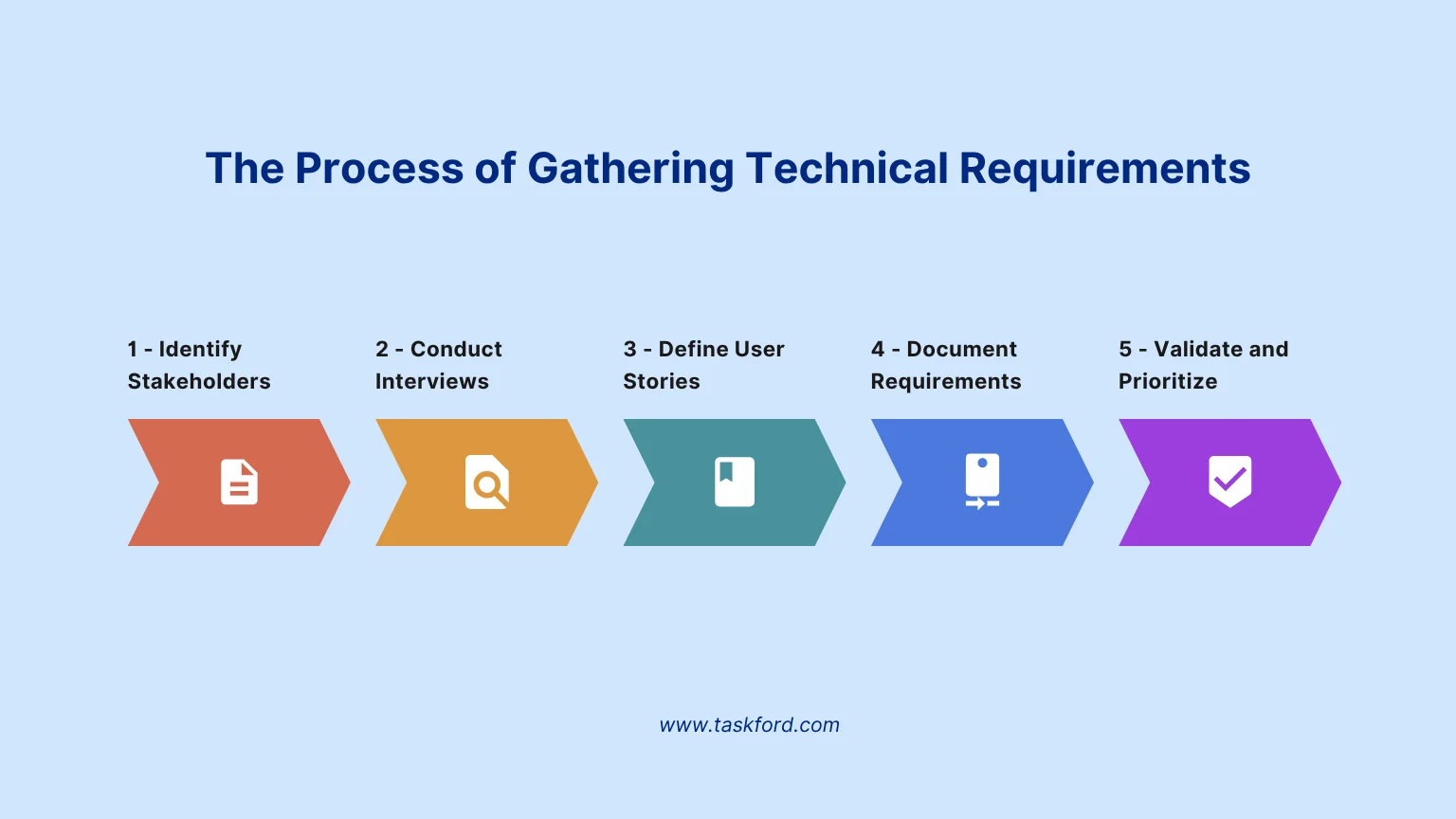
Step 1: Identify Stakeholders
The first thing you need to do is identify the key stakeholders who will provide insights into technical needs. These are the people or groups that will either be affected by the system or play a role in its development. This could include business owners, project managers, IT teams, developers, end-users, and even external partners or vendors.
Step 2: Conduct Interviews
Once you’ve identified your stakeholders, it’s time to start gathering their input. One of the most effective ways to do this is through interviews. Whether it’s one-on-one conversations or group discussions, interviews allow you to dive deep into each stakeholder’s specific needs, challenges, and expectations for the project.
Step 3. Define User Stories/Use Cases
With stakeholder feedback in hand, the next step is to begin defining user stories or use cases. These are short descriptions of how a user will interact with the system. A user story typically follows this format: "As a [user type], I want to [perform an action] so that I can [achieve a goal]."
Step 4. Document Requirements
Now that you’ve gathered all the necessary information, it’s time to document everything clearly. Use a structured format and appropriate tools like Confluence or even simple spreadsheets, to organize these requirements. This documentation should include functional requirements (what the system must do) and technical requirements (how the system should perform).
Step 5: Validate and Prioritize
The final step in the process is validation and prioritization. Once the technical requirements have been documented, it’s crucial to validate them with the stakeholders to ensure that everything aligns with their needs. After validation, you need to prioritize the requirements based on their importance to the business, technical feasibility, and any project constraints (like time or budget).
How to Write and Map Technical Requirements in IT Projects
Here are step-by-step instructions to write and map your requirements effectively in IT Projects
Step 1: Establish a Clear Project Scope
Before diving into the technical details, you need to have a clear understanding of the project's scope. This means defining the business objectives, deliverables, timeline, and any constraints (like budget or resources). This ensures that everyone involved is aligned on the project’s direction and prevents scope creep as the project progress.
For example:
- In-Scope: Development of the e-commerce platform with a product catalog, shopping cart, and checkout process.
- Out-of-Scope: Multi-language or international support (the project will focus on the English version only).
Step 2: Break Down the Project Using Work Breakdown Structure (WBS)
Once the project scope is defined, the next step is to break it down into smaller, manageable components. This is where the Work Breakdown Structure (WBS) comes in. The WBS helps you organize tasks, allocate resources, and identify key deliverables.
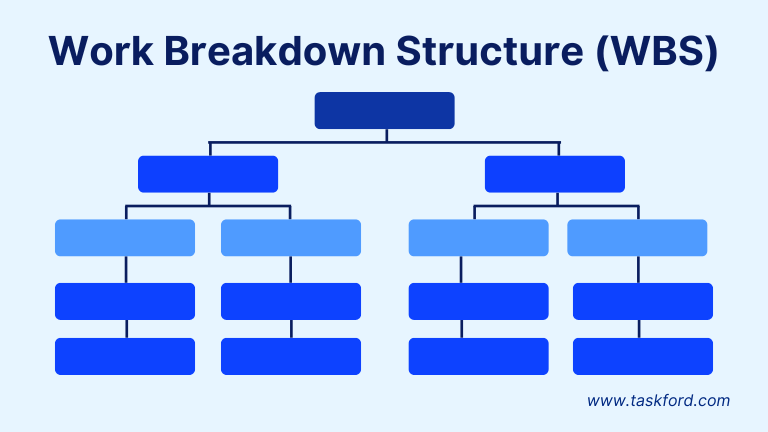
For example: E-commerce Platform Development
- Phase 1: Planning & Analysis
- Task 1: Define project scope and objectives
- Task 2: Identify stakeholders and gather requirements
- Task 3: Create project timeline and allocate resources
- Phase 2: Design & Development
- Task 1: Front-End Development
- Task 2: Back-End Development
Step 3: Document Requirements in a Structured Format
Clear and organized documentation ensures that everyone involved in the project, from developers to stakeholders, can easily understand and track the requirements. This step also serves as a reference throughout the project lifecycle.
To document technical requirements clearly, use a simple, consistent format like this:
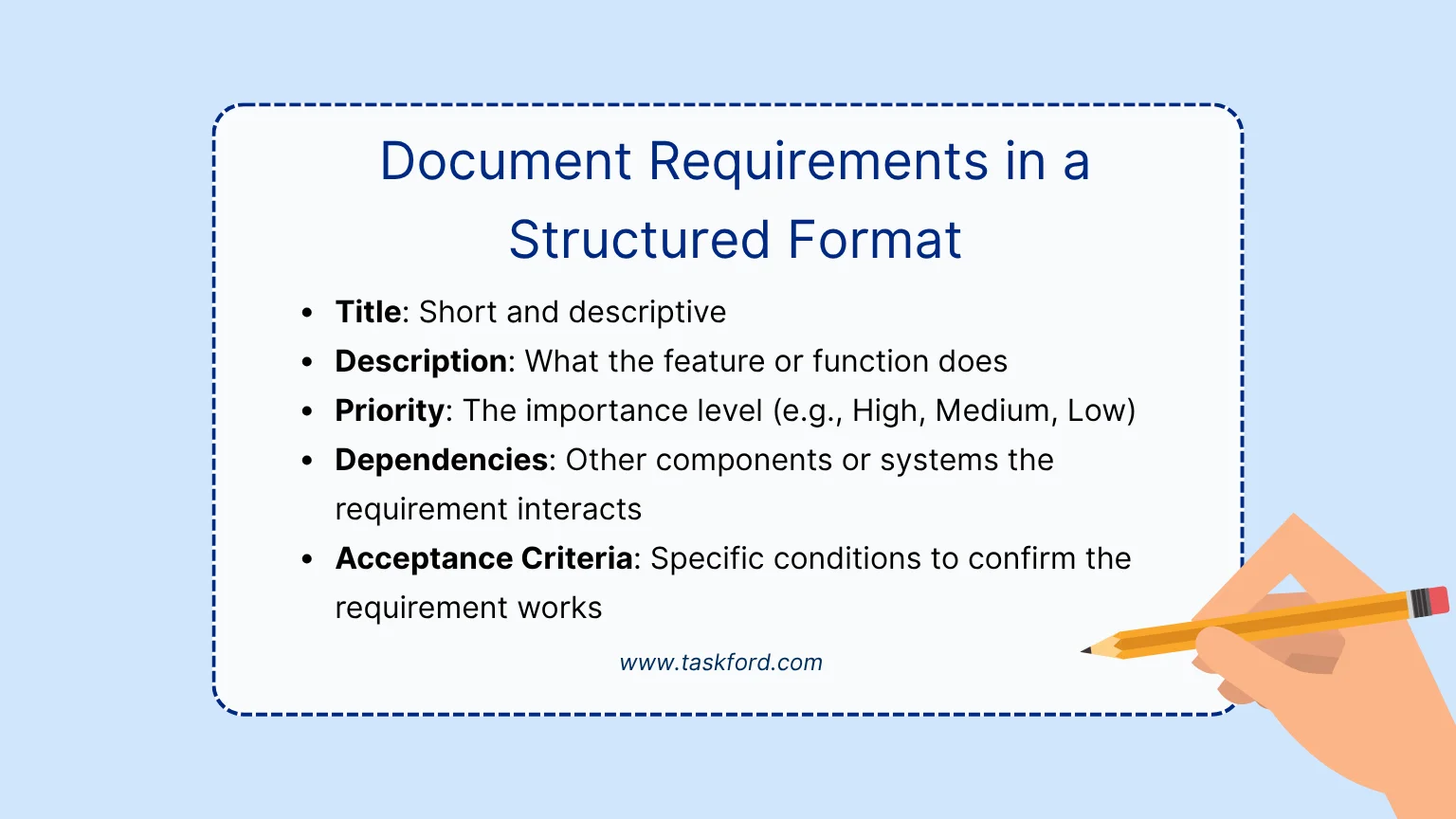
- Title: Short and descriptive (e.g., "User Login Functionality")
- Description: What the feature or function does (e.g., "Allows users to log in using their email and password.")
- Priority: The importance level (e.g., High, Medium, Low)
- Dependencies: Other components or systems the requirement interacts with (e.g., "Depends on the user database and authentication service.")
- Acceptance Criteria: Specific conditions to confirm the requirement works (e.g., "User can log in with valid credentials; error message for invalid credentials.")
Step 4: Use Agile-Compatible User Stories
If you're working in an Agile environment, documenting requirements as user stories helps keep the focus on user needs and business value. A user story is a simple, user-centric way of writing technical requirements, typically following this format:
As a [type of user], I want to [perform an action], so that I can [achieve a goal].
Example:
As a registered user, I want to log in with my email and password, so that I can access my account and make purchases.
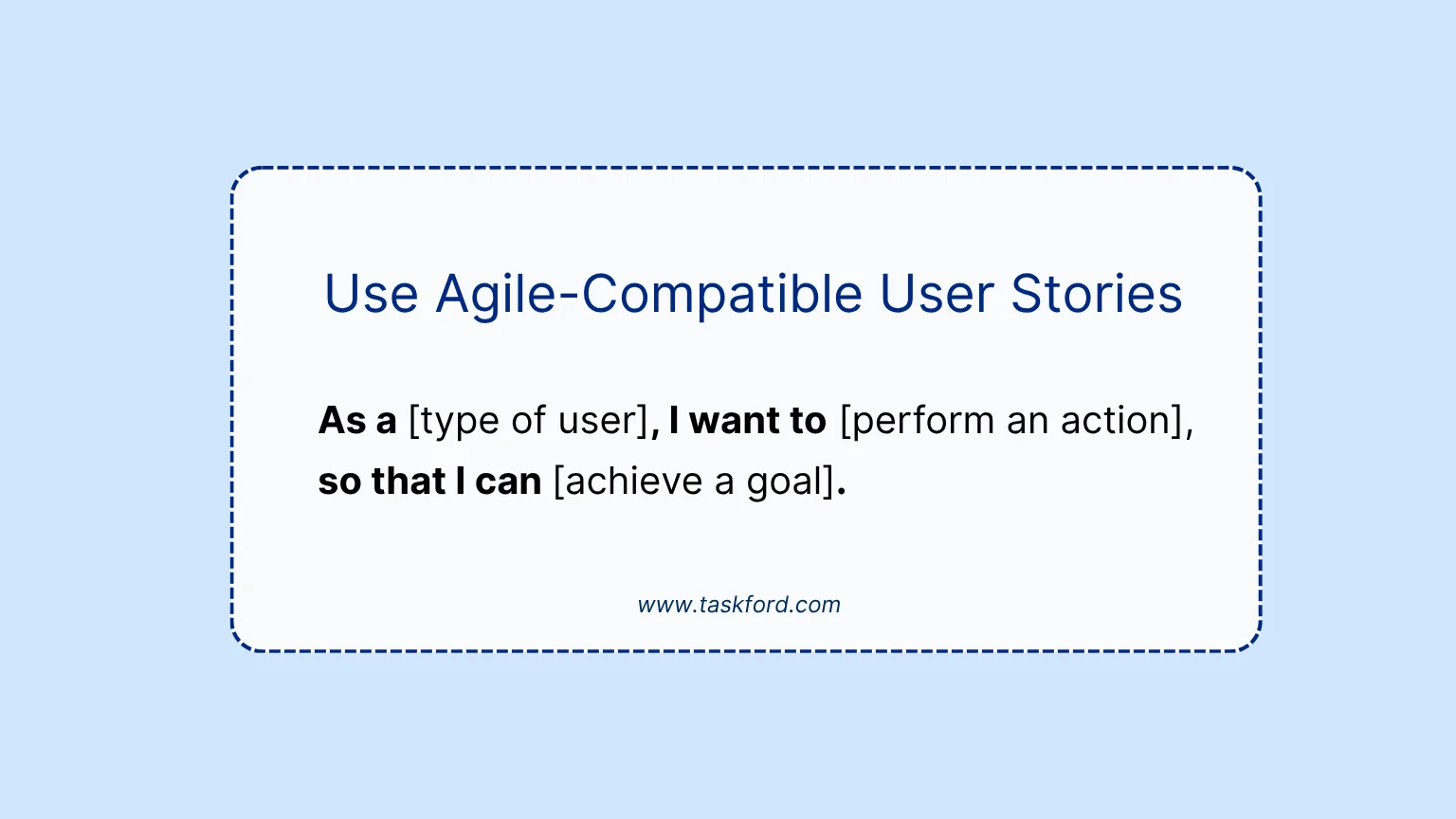
Step 5: Rank and Prioritize Requirements
Once you’ve documented your requirements, the next step is to prioritize them based on their importance to the project’s success. This helps ensure that the most critical features are built first, especially when resources and time are limited.
-
Work with Stakeholders: Collaborate with stakeholders to understand which requirements are most important to the business and users.
-
Use Prioritization Techniques:
- MoSCoW Method (Must have, Should have, Could have, Won’t have)
- Kano Model (Basic, Performance, and Excitement features)
- Impact vs. Effort Matrix (High-impact, low-effort vs. low-impact, high-effort features)
-
Rank Based on Value: Consider the business value, technical feasibility, and urgency of each requirement.
Step 6: Validate Requirements with Stakeholders
This step involves reviewing the requirements with the key stakeholders, such as project managers, business owners, and users, and confirming that everything is accurate, clear, and complete. Regular feedback loops should be established throughout the project to allow stakeholders to review, refine, and approve the requirements as needed.
By validating early and often, you reduce the risk of misunderstandings or misalignments later in the project, ensuring that the final product meets expectations and delivers real value.
Conclusion
In any IT project, clear and well-defined technical requirements are the backbone of success. They ensure the system meets both user needs and business objectives while providing a roadmap for development teams. By properly gathering, documenting, and prioritizing technical specifications, you reduce risks, avoid scope creep, and create a solid foundation for the project. Whether you’re working with agile methodologies or traditional approaches, the process of mapping technical details helps keep the project aligned with goals, on schedule, and within budget, ultimately leading to the delivery of a high-quality, functional solution.
Making work simpler,
smarter, and more connected
Join our waitlist and be notified first.

Related Blog
Subscribe for Expert Tips
Unlock expert insights and stay ahead with TaskFord. Sign up now to receive valuable tips, strategies, and updates directly in your inbox.

